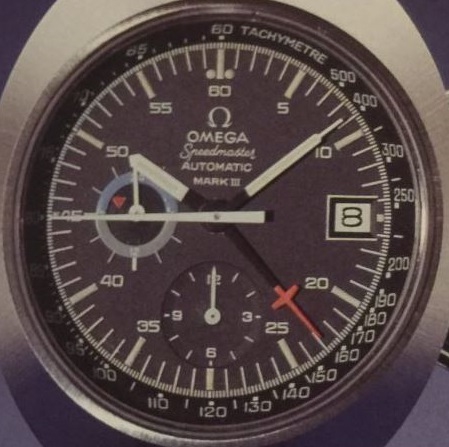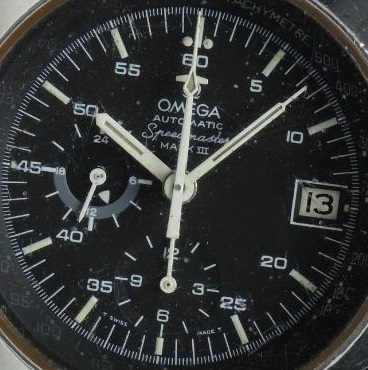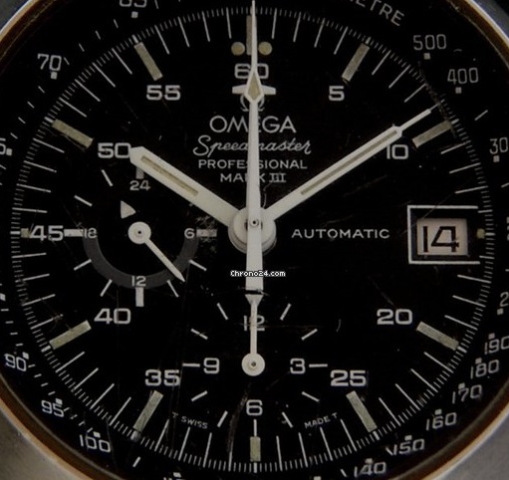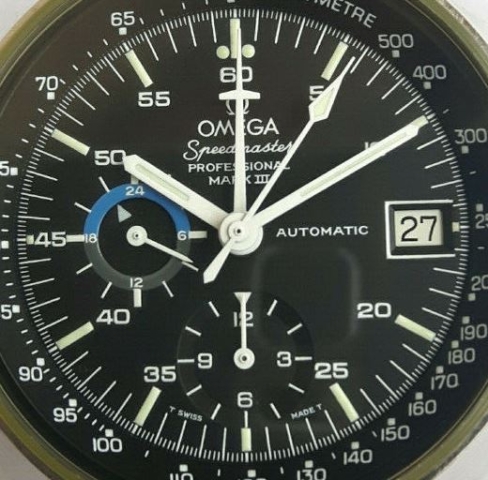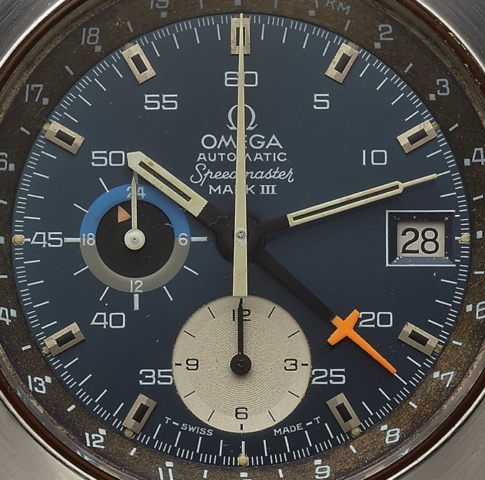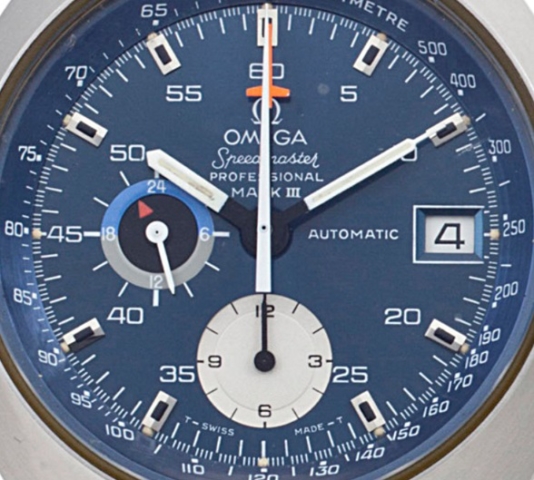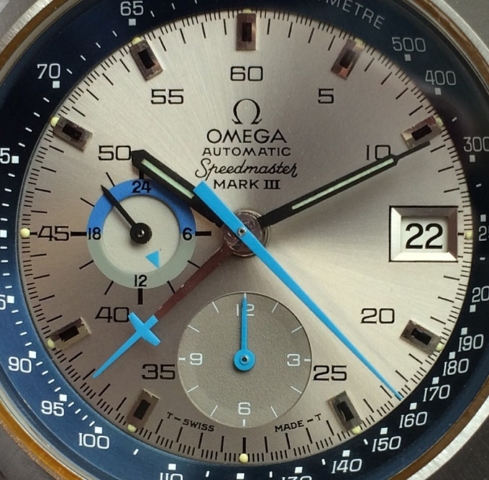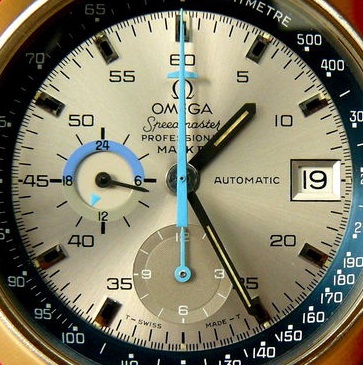When I started tracking cal. 1040 serial number data, I pretty much only tracked the case reference and the serial number. Over time I’ve added more information to my database such as the date of manufacture from an Extract of the Archives and the source of the observation plus anything unusual or missing. For Speedmaster 125s I also now track the presence or lack of alphanumeric code. One thing I regrettably didn’t immediately track was the dial type, which in hindsight was a real missed opportunity.
However, I have now been noting the dial type long enough that the data is somewhat useful. From time to time I’ll be taking a look at what my dial data tells us and sharing with you. For starters, let’s look at a watch that has plenty of dial variation, the Speedmaster Mark III.








The Mark III came in three dial colors and all three came in both Professional and non-professional dials. Chuck Maddox attempted to find out what was up with the Professional designation of the Mark III, and after an email exchange with the Omega Museum, came to the following conclusion:
“Thus, it appears that early Mark III(a)’s manufactured during 1971 and 1972 sport the “Omega Automatic Speedmaster Mark III dial with no reference to “Professional”… while Mark III’s manufactured during 1973 and thereafter feature the “Omega Speedmaster Professional Mark III Automatic” dial…”
This is pretty much the only credible statement on whether or not one or the other (Pro or non-pro) came first and when the switch happened. Does the data support this? Let’s see…
Of the 119 serials I’ve observed of Mark IIIs, I have noted the dial on 40 of them. Before getting into the dates, let’s just look at Pre Pro vs. Pro, and the breakdown by color:
As we can see, the professional designation is more common. Nearly three quarters of all Mark IIIs have Professional dials. Black is the most common color at 40%, followed by 35% for blue, and then silver at 25%.
Interestingly, blue is the most common color by a slight edge for Pre Pro dials, followed by silver and then black. But for Professional dials, black is the most common, then blue and silver.
Now let’s add in some broad serial number ranges to use as a proxy for manufacturing date, under the generally safe assumption that a lower serial number means the dial was made earlier. The Pre Pro dials are most common earlier, although there are a few Pro dials seen among the early serials. All the later serials have Professional dials.
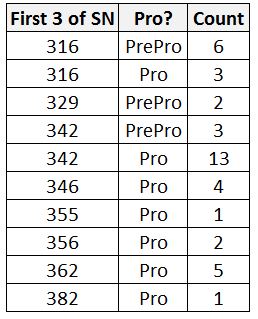

My data likely confirms what Chuck concluded and what the museum told him, as far as the Professional dial coming later, at least in a general sense. But those Professional dials showing up on the early serials is contrary to this, so let’s dig deeper:
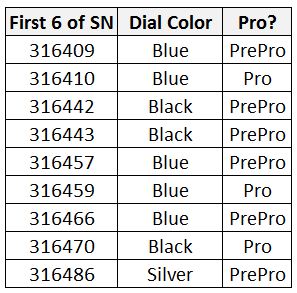

Nine of my observed Mark IIIs have serials starting with 3164, which is a very common range for the earliest cal. 1040s. Three of these nine have Professional dials, including the second-lowest.
What gives? I have no way to confirm this, but to me the most likely answer is that these were fitted with later service dials. The theory being that all early Mark IIIs were NOT Professionals, but all the service dials were eventually Professionals. This would explain why we see some early Professionals but no late Pre Pros.
So when did Omega make the change to Professional? Chuck and the Museum were spot on – the last of the Pre Professionals in my data have 342XXXXXX serials, which most Extract data indicates production in 1973.
To summarize:
- Chuck was right, the Pro dial came later
- The switch to the pro dial happened in 1973 or later
- It appears that all three colors were always availble
- Black is the most common color of the Pros (and overall)
- Blue is the most common of the Pre-Pros
- The Professional dials are more common than the Pre-Pros
- The use of Professional dials as service parts may skew the data on earlier Mark IIIs
I get asked pretty often by collectors considering purchasing a given watch whether I think the dial is original to the watch, and when the watch in question is a Mark III the question is often about the presence or lack of the word “Professional”. The data now supports the long-held theory that the Pre Professional dials came first. Does it matter though if you have or are considering a low serial number Mark III with a Professional dial? I think that can only be answered by the individual. At this point in time, the market doesn’t favor total originality as much with these as with other vintage watches. A service replacement dial, especially an older tritium dial, may make very little impact on value if it matches the condition of the rest of the watch. It will be interesting to see if that changes in the future.


